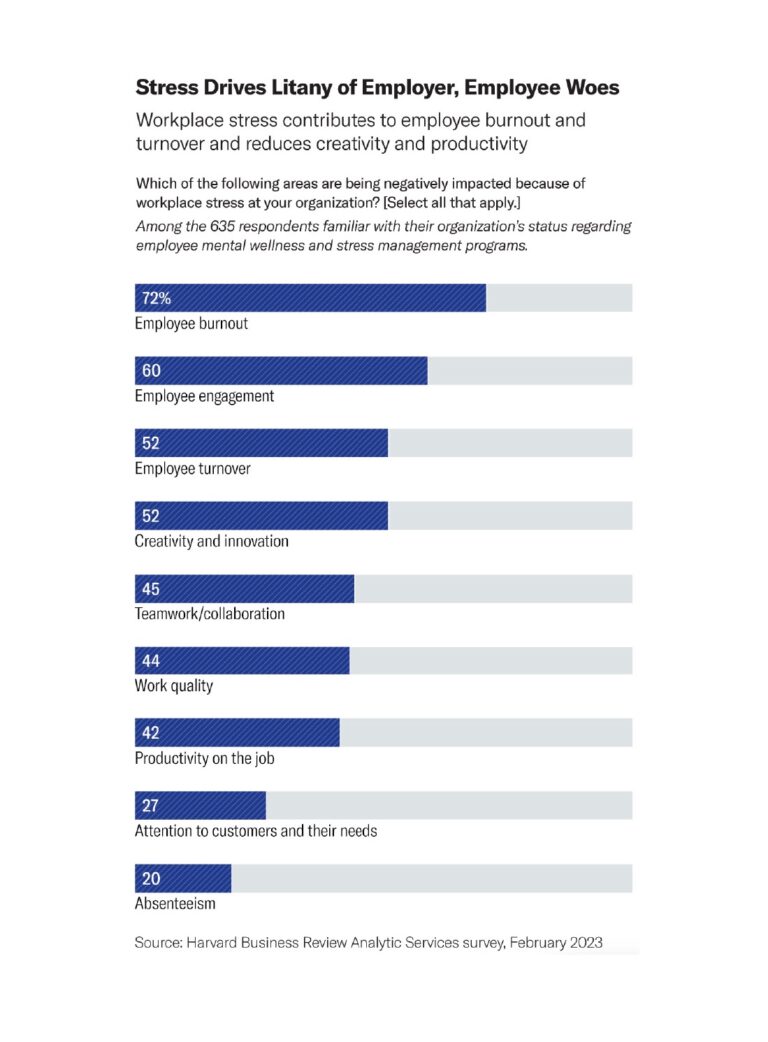The unique stressors of the workers’ comp industry, including the handling of complex claims, the responsibility to get injured workers back to work quickly and efficiently, and the pressure of financial decision-making can all take a toll on employee mental health. This is particularly relevant during the holiday season when factors such as increased workloads, personal pressures, and the emotional intensity of the season contribute to heightened stress levels.
Employers have a pivotal role in mitigating the impact of stress. As this interview from McKinsey & Company points out, leaders who prioritize compassion and understanding can create a more supportive and productive work environment. In this special holiday edition of our spotlight on Employee Experience, we’ll explore how managers can foster a more resilient and engaged workforce by acknowledging the seasonal challenges and implementing supportive mental health wellness strategies year-round.
1. Promote Work-Life Balance
Flexible Scheduling: The American Psychological Association’s 2021 Work & Well-being Survey shows that 34% of employees report that flexible work hours or remote work options during the holidays can significantly reduce stress and improve mental health.
Time-Off Policies: Encourage employees to take time off (and ensure they feel comfortable doing so).
Promote Balance: Share tried and true techniques with employees such as establishing workday routines, increasing physical activity, taking breaks, and making time to be “offline” to promote true work-life balance.
2. Increase Access to Mental Health Resources
Employee Assistance Programs (EAPs): Per Mental Health America, 98% of mid-large companies offer Employee Assistance Programs, but only 4% of employees utilize them. Ensure that employees are aware of and can easily access EAPs that offer counseling and mental health support.
Digital Mental Health Tools: Digital tools enable widespread support that’s accessible anytime, anywhere, without the wait for traditional therapy, erasing some of the traditional barriers that prevent employees from seeking assistance by making it convenient, easy, and anonymous.
3. Build a Supportive Culture
Awareness Campaigns: Share resources and information about mental health during the holiday season to raise awareness of mental health and reduce stigma.
Open Communication: Accenture’s insights into psychological safety in corporate culture underscore the importance of creating an environment where employees feel safe to express concerns and challenges related to mental health. Encourage a culture where employees feel safe to discuss their mental health, especially during the stressful holiday season.
79% of employers believe they have an open and inclusive environment that encourages a dialogue about mental health, but only 52 percent of workers agree.
Future of Benefits Study, The Hartford
Peer Support Groups: Facilitate the creation of peer support groups where employees can share experiences and coping strategies.
4. Train Leadership
Compassionate Leadership: Research shows that leaders who take on employee wellness and mental health training can make a huge positive impact on turnover, productivity, and absenteeism. Just three hours of mental health awareness training can improve attitudes about mental health and lead to a more supportive work environment. Train leaders and managers to recognize signs of stress and mental health issues, especially during the holiday months.
The Working Well Toolkit: The Working Well Toolkit provided by the Workplace Mental Health platform offers practical steps for employers. It includes resources for beating burnout, a prevalent issue in high-stress environments.
U.S. Department of Health & Human Services Reflection Questions: The HHS’s reflection questions for workplace mental health provide a framework for employers to assess their current practices and identify areas for improvement.
This resource deck is designed to help leaders begin to transform organizational culture around the Office of the U.S. Surgeon General’s recommended Five Essentials for Workplace Mental Health & Well-being: Protection from Harm, Connection & Community, Work-Life Harmony, Mattering at Work, and Opportunity for Growth.
5. Recognize & Address Burnout
Develop a Holistic Approach: Mental health cannot be viewed in isolation. A 2023 survey by McKinsey & Company found a holistic approach that encompasses physical, emotional, and mental well-being is crucial. This includes addressing burnout, promoting compassion, and understanding the unique perspectives and challenges faced by different generations in the workplace.
Monitoring Workloads: A Gallup Survey revealed that 76% of employees reported experiencing burnout on the job. Managers should keep a close eye on workloads, especially during the busy holiday season, to prevent burnout.
Regular Check-ins: Implement regular check-ins with employees to understand their challenges and offer support.
6. Celebrate & Acknowledge Achievements
Recognize Excellence: Implement recognition programs that acknowledge employees’ hard work, especially during the high-pressure holiday season.
A Year-Round Commitment
Navigating holiday stress and fostering employee wellness in the workers’ comp industry requires a multifaceted approach. The holiday season amplifies existing stressors in the workplace, such as heavy workloads and emotional pressures, making it crucial for employers to adopt strategies that support mental health and work-life balance. Employers can mitigate these stressors by implementing these strategies to inspire a more resilient, engaged, and healthy workforce, not just during the holidays but throughout the year.
Additional Resources
The Battle Against Workplace Stress: How Smart Organizations Are Creating Healthier Environments, Harvard Business Review
Employers See Employee Mental Health as Major Concern, Insurance Journal
WHO Guidelines on Mental Health at Work, World Health Organization
Mental Health Awareness & How Employers Can Be Supportive, Workplace Mental Health Podcast
Moving the Needle on Burnout: What Does the Data Say?, McKinsey Health Institute
Why Supporting the Mental Health of Younger Workers Starts with Organizational Culture, Accenture
Workplace Accommodation Toolkit, Job Accommodation Network
FREE LEADERSHIP COURSE: Mental Health in the Workplace, The Center for Health, Work & Environment, Colorado School of Public Health
CASE STUDY: How These Organizations Are Leading in Making Employee Mental Health a Priority, American Psychological Association


